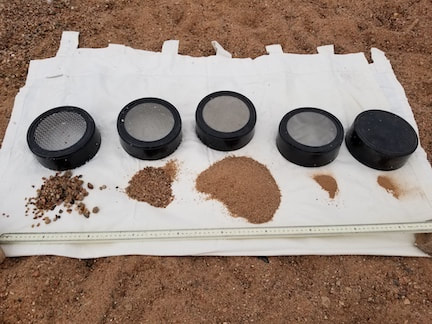Earlier this year I decided I wanted to create a progressive series of short YouTube videos on geological topics. I'm still kicking around that project. In the meantime the episodes I've envisioned can find a place here.
It's always hard to decide how to break into the circle of any natural science. In the beginning was. . . stardust? Starting there will take too long. Let's start with sand instead. Or rather, sediment, of which sand is a common part.
What is sediment? Conventionally speaking, sediment is any loose solid material that settles out of water. Like coffee grounds.
I'm looking down at the dry river bed of the Santa Fe River in the photograph below, where floods have washed down sediment from the foothills. As the water slows, the solid stony material it was carrying settles out to form the river bed.
It's always hard to decide how to break into the circle of any natural science. In the beginning was. . . stardust? Starting there will take too long. Let's start with sand instead. Or rather, sediment, of which sand is a common part.
What is sediment? Conventionally speaking, sediment is any loose solid material that settles out of water. Like coffee grounds.
I'm looking down at the dry river bed of the Santa Fe River in the photograph below, where floods have washed down sediment from the foothills. As the water slows, the solid stony material it was carrying settles out to form the river bed.
If we sift a single scoop of this loose material through a nest of sieves, graduated from coarser to finer screens, we get these separate piles of differently-sized sediment:
You can see these range from rounded gravel, to pebbles, to coarse sand, to finer sand, and finally to silt and clay. All of this material was once part of the local bedrock, but now it's in pieces. The names we use refer to size of the pieces, rather than what they're made up of.
The Greek word for broken is clast. Consequently, geologists often call this kind of sediment clastic sediment. Loose particles from the size of boulders to the finest clay, dropped out of water, air, or ice, are all examples of clastic sediment.
The Greek word for broken is clast. Consequently, geologists often call this kind of sediment clastic sediment. Loose particles from the size of boulders to the finest clay, dropped out of water, air, or ice, are all examples of clastic sediment.



 RSS Feed
RSS Feed
